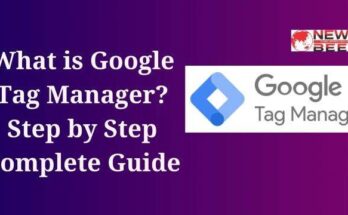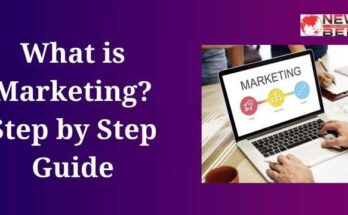On-Page SEO refers to the optimization techniques applied directly to individual web pages to enhance their visibility and ranking on search engines. It involves optimizing elements like keywords, content, titles, headers, images, and URLs. The goal is to improve both search engine understanding and user experience, ultimately driving higher organic traffic, better rankings, and increased engagement.
What is On Page SEO Techniques?
On-Page SEO (Search Engine Optimization) refers to the practice of optimizing individual web pages to improve their visibility and ranking on search engine results pages (SERPs). It involves various techniques and strategies aimed at making your web content more search engine-friendly and user-friendly. On-Page SEO is within your control as it involves optimizing elements directly on your website. Here’s a detailed breakdown of On-Page SEO factors:
Here are Some Key Points of On-Page SEO:
- Keyword Research: This is the foundation of On-Page SEO. It involves identifying relevant keywords and phrases that users are likely to search for when looking for content related to your topic. Effective keyword research helps you understand your target audience and what they’re searching for.
- Title Tag: The title tag is an HTML element that defines the title of a web page. It’s displayed as the clickable headline on search engine results pages and in web browser tabs. Include your target keyword near the beginning of the title tag to make it clear to search engines what the page is about.
- Meta Description: The meta description is a brief summary of the content on a web page. While it doesn’t directly impact rankings, a well-written meta description can entice users to click through to your page from search results.
- URL Structure: Use descriptive and concise URLs that include your target keywords. Avoid using long, convoluted URLs with unnecessary parameters.
- Header Tags (H1, H2, H3, etc.): These tags are used to structure your content and break it into sections. The H1 tag should usually contain the main topic of the page and should include your target keyword. Subsequent header tags (H2, H3, etc.) should be used to organize content hierarchy.
- Keyword Usage in Content: Sprinkle your target keyword naturally throughout your content. Avoid keyword stuffing, which is overusing the keyword to manipulate rankings. Focus on providing valuable and informative content for users.
- Keyword Density: This refers to the percentage of times a keyword appears in the content compared to the total word count. There’s no fixed ideal keyword density, but aim for natural and contextual usage.
Also, Read This: What is SEO? Type and Key Factors of SEO
- Content Quality: High-quality, relevant, and valuable content is crucial for both users and search engines. Engaging content is more likely to be shared and linked to by others, which can contribute to higher rankings.
- Images and Alt Tags: If your content includes images, use descriptive alt tags for them. Alt tags not only improve accessibility for visually impaired users but also provide an opportunity to include relevant keywords.
- Internal Linking: Link to other relevant pages within your website. Internal links help users navigate your site and distribute authority and relevance across different pages.
- External Linking: Including outbound links to authoritative and relevant sources can enhance the credibility of your content. However, be cautious and ensure the links are genuinely useful.
- Mobile-Friendliness: Your website should be responsive and provide a great user experience on mobile devices. Google considers mobile-friendliness as a ranking factor.
- Page Loading Speed: Faster-loading pages are preferred by users and search engines. Optimize images, use browser caching, and employ other techniques to improve loading times.
- Schema Markup: This structured data markup helps search engines understand the context of your content. It can enhance the appearance of your listings in search results with rich snippets.
- Social Sharing: Make it easy for users to share your content on social media platforms. While social signals might not directly impact rankings, increased sharing can lead to more visibility.
- User Experience (UX): A good user experience, including easy navigation, clear calls to action, and minimal distractions, can indirectly contribute to longer dwell times and lower bounce rates, both of which are positive signals to search engines.
How to Do On Page SEO
- Identify relevant keywords and phrases related to your content.
- Use tools like Google Keyword Planner, SEMrush, Ahrefs, or Ubersuggest to discover search volume and competition for keywords.
2. Content Creation:
- Create high-quality, informative, and engaging content that addresses the needs of your target audience.
- Organize your content using headers (H1, H2, H3, etc.) to improve readability and structure.
3. Title Tag:
- Craft a compelling and descriptive title that includes your target keyword near the beginning.
- Keep the title tag under 60 characters to ensure it’s displayed properly in search results.
4. Meta Description:
- Write a concise and informative meta description (150-160 characters) that encourages users to click through.
- Include your target keyword naturally if possible.
5. URL Structure:
- Create clean, descriptive URLs that incorporate your target keyword.
- Avoid using special characters, numbers, and unnecessary parameters in the URL.
6. Header Tags and Keyword Usage:
- Use H1 tags for the main title and include your target keyword.
- Use H2, H3, and other header tags for subheadings and sections, where applicable.
- Distribute your target keyword naturally throughout the content, maintaining readability.
7. Keyword Density and Natural Usage:
- Aim for natural keyword usage instead of a specific density.
- Use synonyms and related terms to avoid overusing the main keyword.
8. Alt Tags for Images:
- Add descriptive alt tags to images, using relevant keywords where appropriate.
- Alt tags help search engines understand the content of images and improve accessibility.
9. Internal Linking:
- Include relevant internal links to other pages on your website.
- Anchor text should be descriptive and relevant to the linked page.
10. External Linking:
- Link to authoritative and relevant sources that add value to your content.
- Ensure the external links open in a new tab or window to keep users on your site.
11. Mobile-Friendly Design:
- Ensure your website is responsive and mobile-friendly.
- Test your pages using Google’s Mobile-Friendly Test tool.
12. Page Loading Speed:
- Optimize images for the web.
- Minimize HTTP requests and use browser caching.
- Use tools like Google PageSpeed Insights to identify speed-related issues.
13. Schema Markup:
- Implement schema markup to provide additional context to search engines.
- Schema can enhance the appearance of your listings in search results.
14. User Experience:
- Ensure easy navigation, clear calls to action, and a clean design.
- Aim for longer dwell times by providing valuable content and engaging features.
15. Review and Optimization:
- Regularly review and update your content to keep it relevant and up-to-date.
- Monitor your rankings and organic traffic to assess the impact of your optimizations.
16. Avoid Black Hat Techniques:
- Do not engage in keyword stuffing, cloaking, or other manipulative tactics that violate search engine guidelines.
Remember that SEO is an ongoing process. The search landscape evolves, and your website’s performance will require continuous adjustments and improvements to maintain and improve your rankings.
Why is On Page SEO Important?
On-Page SEO is important for several reasons, as it directly influences your website’s visibility, user experience, and overall search engine rankings. Here’s why On-Page SEO matters:
- Search Engine Visibility: Effective On-Page SEO helps search engines understand what your content is about. When search engines like Google can interpret your content accurately, they are more likely to display your pages in relevant search results, increasing your website’s visibility to potential visitors.
- Higher Rankings: Well-optimized pages have a better chance of ranking higher in search engine results for relevant keywords. Higher rankings mean more organic traffic to your website, as users tend to click on the top results more often.
- User Experience: On-Page SEO encourages you to structure your content in a user-friendly manner. This benefits both visitors and search engines by making your content easy to navigate and understand. A positive user experience can lead to longer dwell times, lower bounce rates, and increased engagement, all of which are positive signals to search engines.
- Relevance: By optimizing your content for specific keywords and phrases, you ensure that your pages are more relevant to user search queries. This relevance helps in attracting the right audience to your website, increasing the chances of conversions and engagement.
- Click-Through Rates (CTR): A well-crafted title tag and meta description can entice users to click on your link in the search results. If your title and description effectively communicate the value of your content, you’ll likely experience higher click-through rates.
Read Also:- What is Chatgpt Step by Step
- Rich Snippets and Enhanced Listings: Properly implemented schema markup can lead to rich snippets, which are additional information displayed in search results (like star ratings, images, and more). These enhanced listings can make your result stand out, attracting more clicks.
- Content Quality: On-Page SEO encourages you to create high-quality, informative, and valuable content. This content not only appeals to search engines but also provides value to your audience. Quality content is more likely to be shared, linked to, and referenced by others, which can lead to increased authority and better rankings.
- Competitive Advantage: When you implement effective On-Page SEO, you gain a competitive edge over websites that haven’t optimized their pages. You’re more likely to rank above them in search results, which can translate into more traffic, leads, and customers.
- Cost-Effectiveness: On-Page SEO is generally more cost-effective than other forms of digital marketing. While it requires time and effort, it doesn’t involve direct payments for ad placements or campaigns. Once your pages are optimized, they can continue to attract organic traffic without ongoing costs.
- Long-Term Benefits: Properly optimized pages can provide long-term benefits. Once your content ranks well and gains authority, it can continue to drive traffic and conversions over time, reducing your reliance on paid advertising.
In essence, On-Page SEO sets the foundation for your website’s overall search engine performance. It helps your content reach the right audience, improves user experience, and positions your website as a valuable resource in your niche or industry.
Conclusion
In conclusion, on-page SEO is a fundamental aspect of optimizing web pages to enhance search engine visibility and improve user experience. By following the key points and best practices of on-page SEO, you can create content that is more appealing to both search engines and users, leading to higher rankings in search results and increased organic traffic to your website.
In summary, on-page SEO is an ongoing process that requires attention to detail, dedication, and adherence to best practices. By following these guidelines, you can create a website that not only ranks higher in search results but also provides a seamless and satisfying user experience, ultimately leading to increased organic traffic, better engagement, and potential business success.




